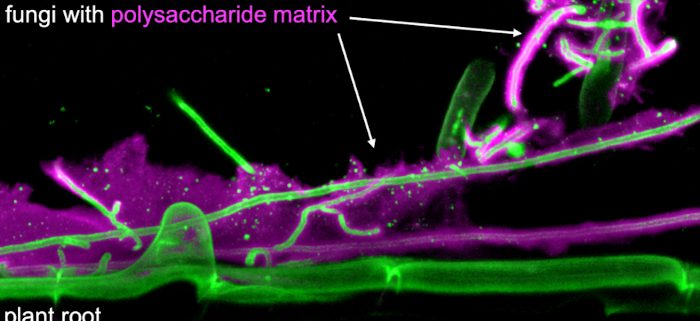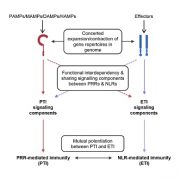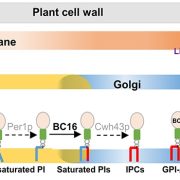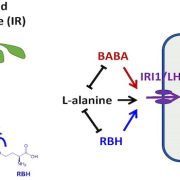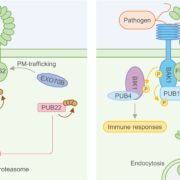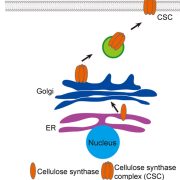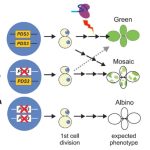Sweet revenge: a fungal oligosaccharide takes on plant defense responses
Chandrasekar, Wanke, Wawra and co-workers discover how fungal cell surface polysaccharides assist in evading hostile plant immune responses.
https://doi.org/10.1093/plcell/koac114
By Alan Wanke1 and Pia Saake2 Alga Zuccaro2
1 Sainsbury Laboratory, University of Cambridge, Cambridge, United Kingdom
2 University of Cologne, Cluster of Excellence on Plant Sciences (CEPLAS), Institute for Plant Sciences, Cologne, Germany
Background: Plants secrete various hydrolytic enzymes into the apoplastic space to protect themselves against invading microbes. Some of these enzymes target the fungal cell wall polymer chitin. This enzymatic attack leads to the release of chitin oligomers, which can be perceived by the plant immune system, informing the plant to activate its defense machinery. However, chitin accounts for only a small part of most fungal cell walls. Recent studies have highlighted a largely uncharacterized, β-glucan-rich extracellular polysaccharide matrix (EPS) surrounding the cell wall of various plant-colonizing fungi.
Question: This EPS matrix is made of glucose and abundantly produced during colonization. As its secretion into the extracellular environment is costly for the fungus, we explored how this EPS matrix affects plant immunity and fungal colonization.
Findings: We demonstrated that EPS matrices from a symbiotic and pathogenic plant-colonizing fungus are distinct from the non-soluble fungal cell walls with respect to their protein and carbohydrate composition. Enzymatic digests revealed that a secreted plant hydrolase from barley (HvBGLUII) acts on these EPS matrices and releases a highly branched β-glucan decasaccharide fragment (β-GD). This fragment is not perceived by the plant immune system but instead detoxifies reactive oxygen species produced by the plant host as a defense mechanism and contributes to host colonization. We thus have shown that the outermost fungal EPS layer represents a protective shield against oxidative stress.
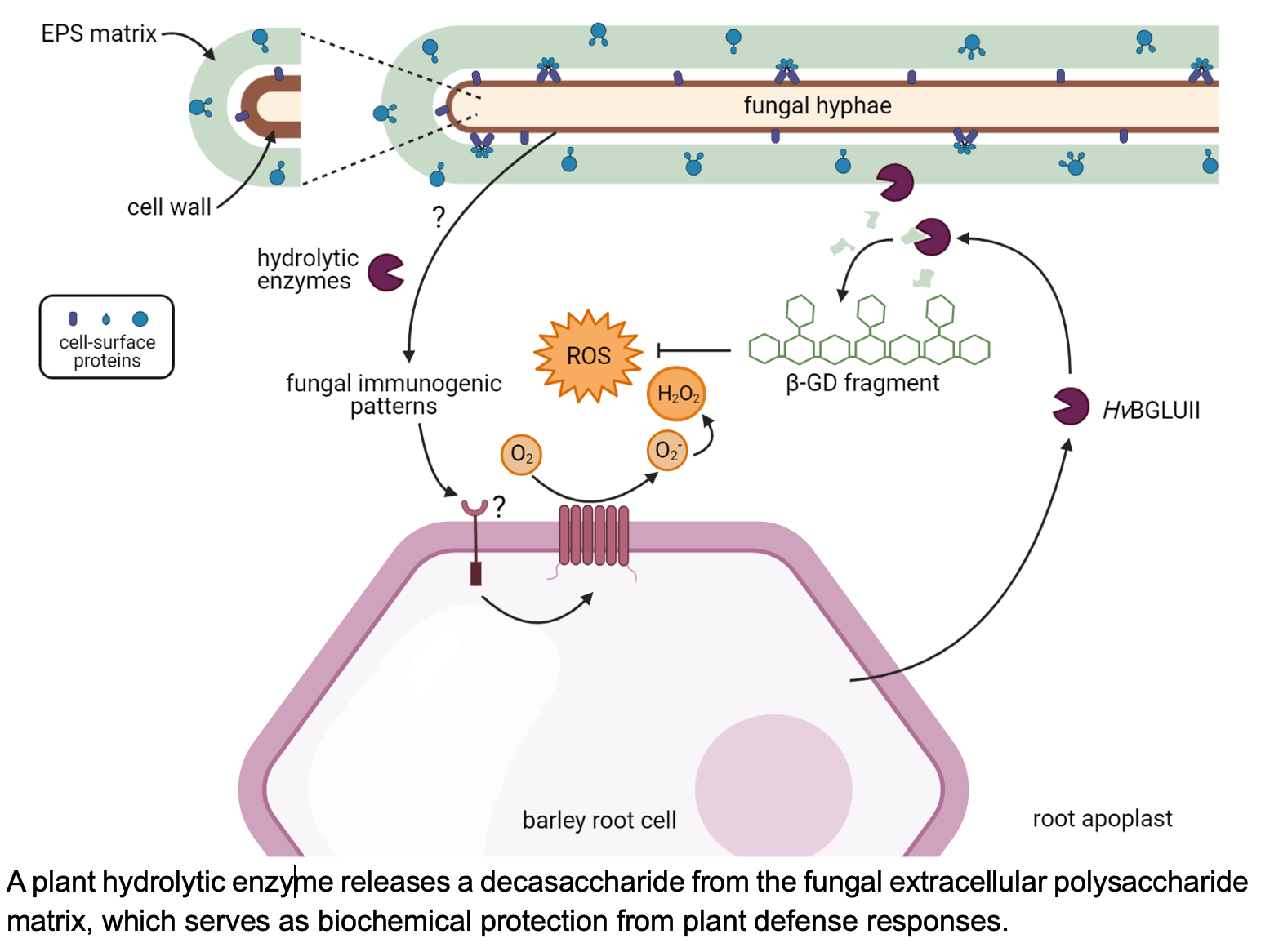
Next steps: The diversity of linkage types and branching patterns of β-glucans not only accounts for their different biochemical properties, but also makes them important messengers for the plant, potentially encoding specific information on the approaching fungal invader. Future studies should aim to identify other plant hydrolases and the elusive glucan receptors, to disentangle the contribution of β-glucans to the communication between plant hosts and fungi.
Balakumaran Chandrasekar, Alan Wanke, Stephan Wawra, Pia Saake, Lisa Mahdi, Nyasha Charura, Miriam Neidert, Gereon Poschmann, Milena Malisic, Meik Thiele, Kai Stühler, Murali Dama, Markus Pauly, Alga Zuccaro. (2022) Fungi hijack a ubiquitous plant apoplastic endoglucanase to release a ROS scavenging β-glucan decasaccharide to subvert immune responses. https://doi.org/10.1093/plcell/koac114


